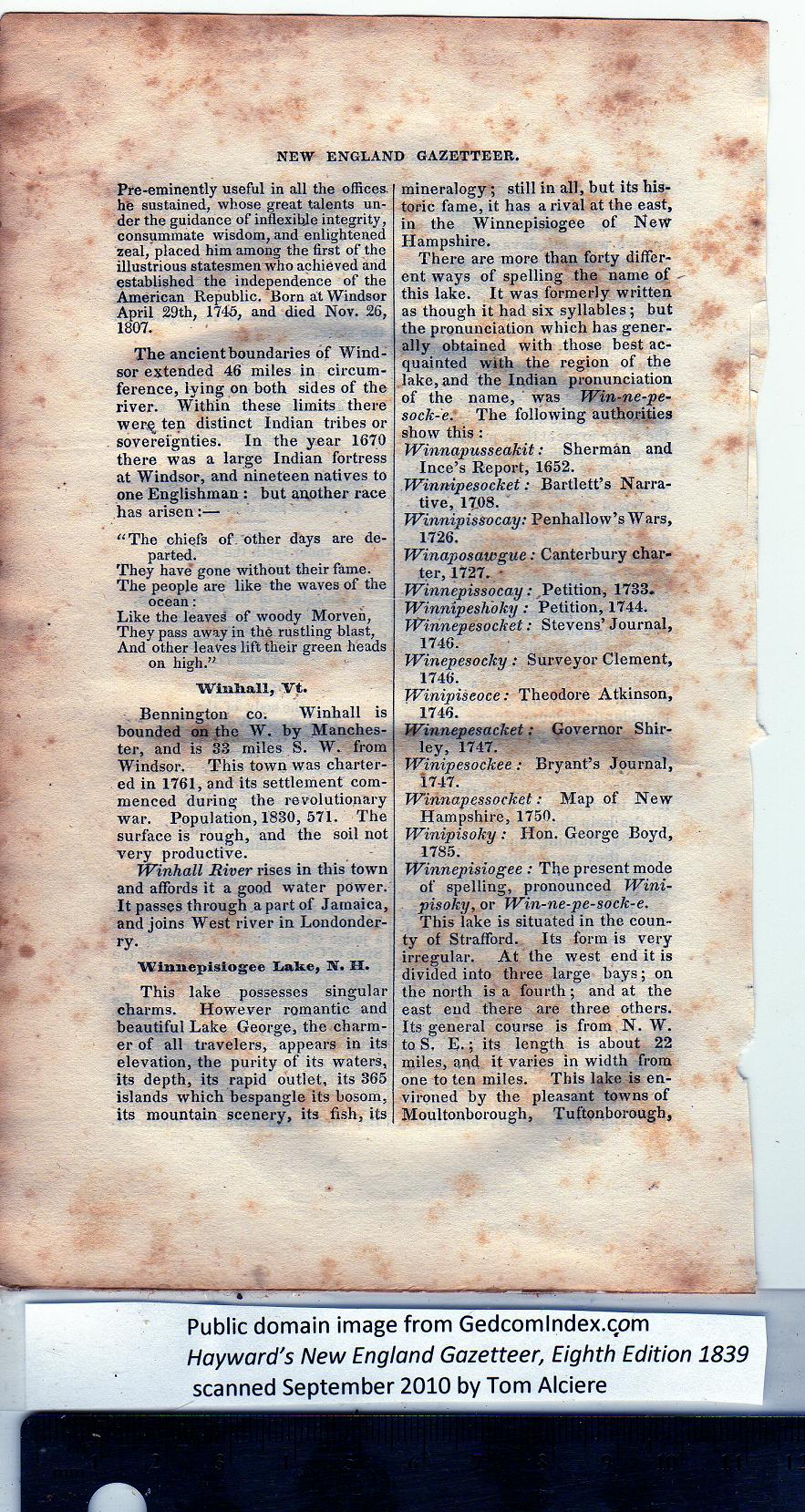|
Pre-eminently useful in all the offices,
he sustained, whose great talents un-
der the guidance of inflexible integrity,
consummate wisdom, and enlightened
zeal, placed him among the first of the
illustrious statesmen who achieved and
established the independence of the
American Republic. Born at Windsor
April 29th, 1745, and died Nov. 26,
1807.
The ancient boundaries of Wind-
sor extended 46 miles in circum-
ference, lying on both sides of the
river. Within these limits there
wer% ten distinct Indian tribes or
sovereignties. In the year 1670
there was a large Indian fortress
at Windsor, and nineteen natives to
one Englishman : but another race
has arisen:—
“The chiefs of. other days are de-
parted.
They have gone without their fame.
The people are like the waves of the
ocean:
Like the leaves of woody Morven,
They pass away in the rustling blast,
And other leaves lift their green heads
on high.”
Winhall, Vt.
Bennington co. Winhall is
bounded on the W. by Manches-
ter, and is 33 miles S. W. from
Windsor. This town was charter-
ed in 1761, and its settlement com-
menced during the revolutionary
war. Population, 1830, 571. The
surface is rough, and the soil not
very productive.
Winhall River rises in this town
and affords it a good water power.
It passes through apart of Jamaica,
and joins West river in Londonder-
ry.
■Winnepisiogee Lake, N. H.
This lake possesses singular
charms. However romantic and
beautiful Lake George, the charm-
er of all travelers, appears in its
elevation, the purity of its waters,
its depth, its rapid outlet, its 365
islands which bespangle its bosom,
its mountain scenery, its fish, its
mineralogy; still in all, but its his-
toric fame, it has a rival at tbe east,
in the Winnepisiogee of New
Hampshire. |
There are more than forty differ-
ent ways of spelling the name of
this lake. It was formerly written
as though it had six syllables; but
the pronunciation which has gener-
ally obtained with those best ac-
quainted with the region of the
lake, and the Indian pronunciation
of the name, ' was Win-ne-pe-
sock-e. The following authorities
show this :
Winnapusseakit: Sherman and
luce’s Report, 1652.
Winnipesocket: Bartlett’s Narra-
tive, 17.0S.
Winnipissocay: Penhallow’s Wars,
1726.
Winaposawgue: Canterbury char-
ter, 1727.
Winnepissocay: .Petition, 1733*
Winnipeshoky : Petition, 1744.
Winnepesocket: Stevens’ Journal,
1746.
Winepesocky: Surveyor Clement,
1746.
Winipiseoce: Theodore Atkinson,
1746.
Winnepesacket: Governor Shir-
ley, 1747.
Winipesockee : Bryant’s Journal,
1747.
Winnapessocket: Map of New
Hampshire, 1750.
Winipisoky : Hon. George Boyd,
1785.
Winnepisiogee : The present mode
of spelling, pronounced Wini-
pisoky, or Win-ne-pe-sock-e.
This lake is situated in the coun-
ty of Strafford. Its form is very
irregular. At the west end it is
divided into three large hays; on
the north is a fourth; and at the
east end there are three others.
Its general course is from N. W.
to S, E.; its length is about 22
miles, and it varies in width from
one to ten miles. This lake is en-
vironed by the pleasant towns of
Moultonborough, Tuftonborough, |
